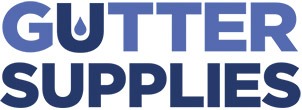How to Unblock a Sink in 5 Easy Steps
Is your sink draining slowly or not at all?
Don't worry - you're not alone.
Sink blockages are a common household problem that can disrupt your daily routine.
Whether you're dealing with a blocked kitchen sink or a clogged bathroom basin, this step-by-step guide will help you get your water flowing freely again.
Understanding Common Causes
Before we dive into solutions, it's important to understand the common causes of sink blockages:
- Food scraps stuck in kitchen sinks
- Hair and soap scum buildup in bathroom sinks
- Grease and fat accumulation
- Small objects accidentally dropped down the drain
These issues can affect your sink and your entire soil and waste system if left unchecked.
Step-by-Step Guide to Unblock Your Sink
The best way to fix your blocked sink is to follow these 5 simple steps we're about to show you.
Step 1: Clear Out Excess Water
First, remove any standing water from the sink.
Use a cup or bowl to scoop it out, then wipe the sink dry with an old towel or dishcloth.
Step 2: Try the Boiling Water Method
This simple technique often works for small blockages:
- Boil a full kettle of water.
- Carefully pour the boiling water directly into the plughole.
- Do this in 2-3 stages, waiting a few seconds between each pour.
This can help remove soap residue or small grease, restoring the water flow.
Step 3: Use Bicarbonate of Soda and Vinegar
If boiling water doesn't do the trick, try this natural cleaning method:
- Pour 1/2 cup of bicarbonate of soda (baking soda) down the sink drain.
- Follow with 1/2 cup of white vinegar.
- Cover the plughole with a wet cloth to contain the chemical reaction.
- Wait 5-10 minutes.
- Flush with hot water.
The fizzing action can help break down stubborn clogs.
Step 4: Plunge Away
A sink plunger can be very effective for unblocking sinks:
- Fill the sink with enough warm water to cover the plunger's head.
- Place the plunger over the plughole, ensuring a good seal.
- Pump the plunger up and down vigorously several times.
- Remove the plunger and check if the water drains.
Repeat if needed.
Step 5: Try the Wire Hanger Method
For blockages caused by hair or solid objects:
- Straighten a wire coat hanger, leaving a small hook at one end.
- Push the hooked end into the plughole.
- Gently fish out any debris you can feel.
- Flush with warm water after removing the blockage.
Be careful not to push the blockage further down the pipe.
If you cannot reach the blockage, you may need to check your inspection chambers for more serious obstructions.
Dealing with Stubborn Clogs
These can be very annoying.
We suggest you follow these practices:
Using a Drain Unblocker
For more challenging blockages, you might need to use a store-bought sink unblocker or drain unblocker:
- Choose a product suitable for your sink type.
- Follow the instructions on the label carefully.
- Ensure the room is well-ventilated when using these cleaning products.
While effective for stubborn clogs, use drain unblockers sparingly, as they can be harsh on your pipes.
Checking the First Bend (U-Bend)
If the above methods don't work, the problem might be in the first bend of the pipe, also known as the U-bend:
- Place a bucket under the U-bend to catch any water.
- Carefully unscrew the U-bend.
- Clean out any debris you find.
- Reassemble the pipe and run water to check for leaks.
This method requires some DIY skills, so proceed with caution.
You might need to investigate your underground drainage system for more complex issues beyond the U-bend.
Natural vs. Chemical Solutions
While chemical drain cleaners can clear tough blockages, they come with downsides:
- Potential damage to pipes with frequent use
- Environmental concerns
- Safety risks if not used properly
Natural remedies like bicarbonate of soda and vinegar are safer for your pipes and the environment.
They're often effective for small blockages and frequently used for maintenance.
Some people also find success using a cup of soda crystals followed by hot water.
Prevention Tips
Here are some tips to keep your sinks running smoothly and prevent future blockages:
- Use drain guards to catch hair and food bits.
- Avoid pouring grease or coffee grounds down the sink.
- Run hot water through the sink after each use.
- Regularly clean your kitchen taps and drains with natural methods.
- Be mindful of what goes down your sink drain.
When to Call a Professional Plumber
While you can fix many sink problems yourself, sometimes you need a pro. Call a professional plumber if:
- Your sink remains blocked after trying the above methods
- Multiple clogged drains in your home
- You notice weird smells or gurgling sounds from the pipes
- Water backs up into other sinks or fixtures
Professionals have specialised tools and expertise to handle serious blockages and can identify any underlying drainage problems.
Remember, a sink without proper maintenance can lead to more serious issues down the line.
By following this guide and staying proactive, you can keep your sinks flowing freely and avoid the hassle of a blocked drain.
Whether you're dealing with a blocked kitchen sink or a slow-draining bathroom basin, these tips should help you tackle the problem effectively.
However, if you're ever in doubt or facing persistent issues, don't hesitate to seek help from a professional plumber.



